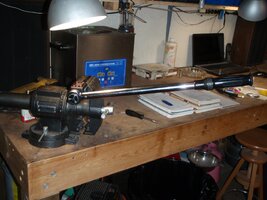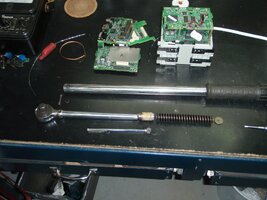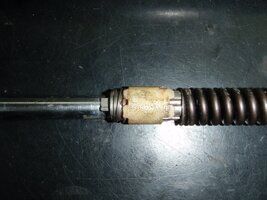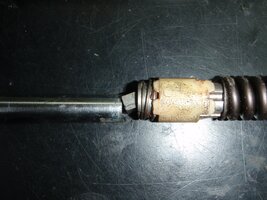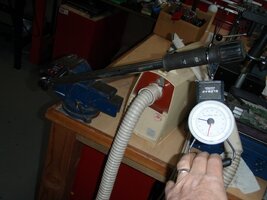I think you guys are over thinking things a bit. The torque is "set" at the nut by the amount "dialed in" on the handle or otherwise (ie. digital wrench). The amount of torque provided at the nut is the same regardless of where you "hold" the wrench. If you hold it closer then YOU have to provide more torque (effort) to the wrench to cause the result (the same result) as you would holding it at the end. You are the changing effort not the torque at the nut.
I hear what you're saying, and I thought that was the case when I began using them, however that's not how it works.
Think of it this way, and it also plays into your method of thinking....when you have a fastener that requires 50 foot-pounds of torque, you are going to exert 50 pounds on a 1-foot-long handle, or 25 pounds on a 2-foot long handle.
The tool used to set this torque, is calibrated with 50 pounds of force at a
set distance, the breakaway force is set after a certain amount of force is being applied to the mechanism.
So if you need 50 foot-pounds of force to tighten the fastener, how much force do you need to apply at a shorter length to achieve that 50 foot-pounds?
It takes more effort (torque) to tighten a fastener using a shorter lever. So on a 24" torque wrench, you would apply 50 pounds. On a 12" wrench, you would apply 100 pounds.
The misconception is the wrench doesn't measure force at the fastener, it measures force applied to the wrench's mechanism.
I believe....I worded that last part correctly..

Edit to add: Think of a beam-style torque wrench, you bend the beam under tightening torque to deflect the indicated value. I'm not versed in the mechanics of the click or digital style wrenches, but it takes more force to change the shape of the beam when choked down on the handle, kinda like a threaded rod, a 4' section bends easily, but a 6" section is hard to bend.
So with a click-style, the head/mechanism is separate from the handle, and by pushing on the handle near the mechanism, you are not allowing the handle portion to deflect as it should. The deflection is imperceivable.



